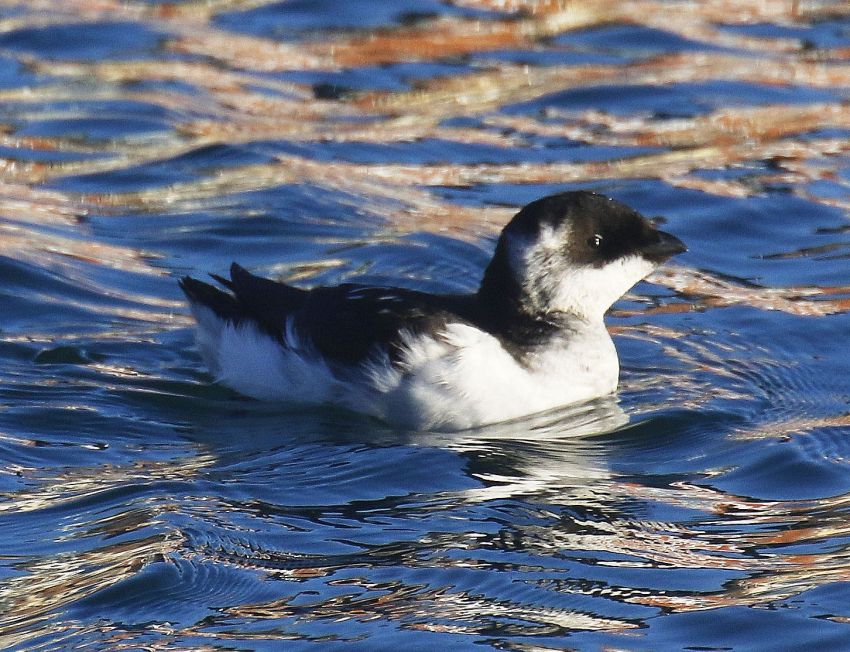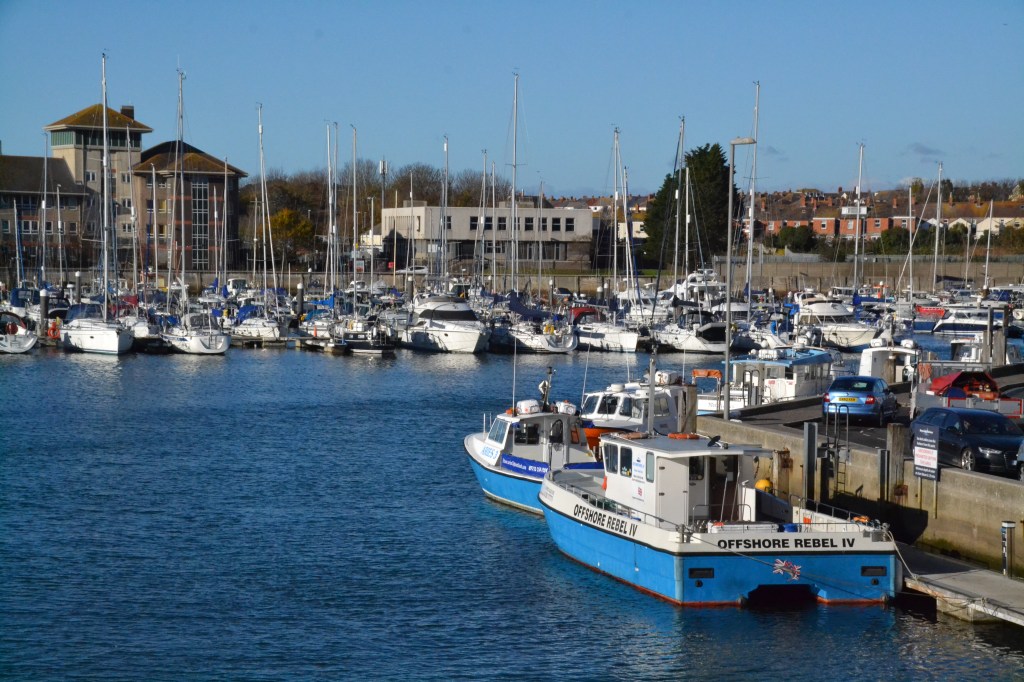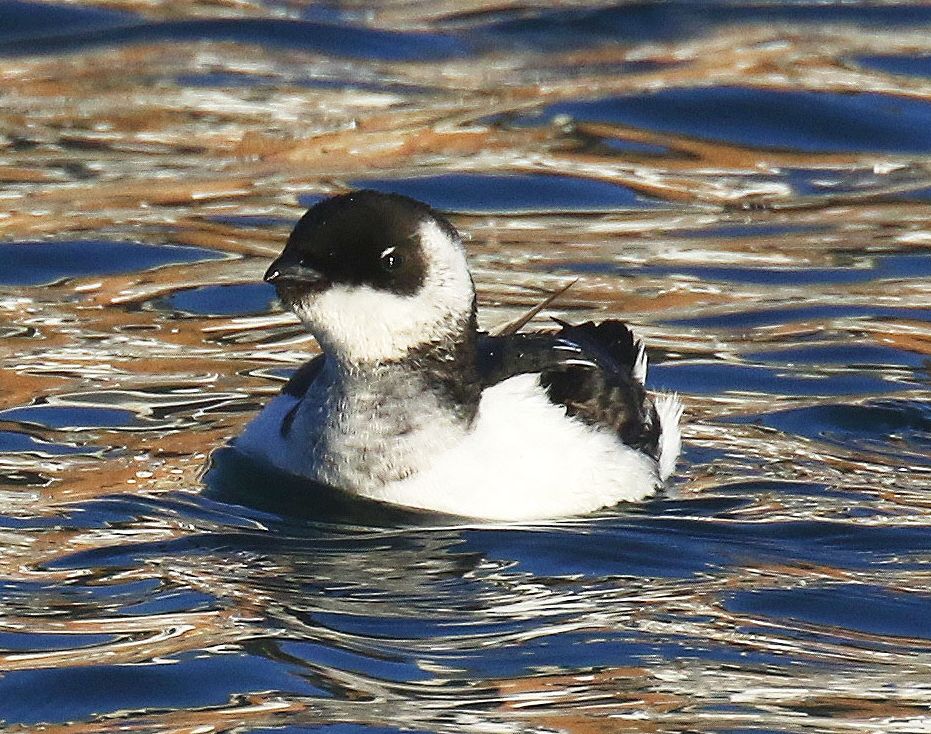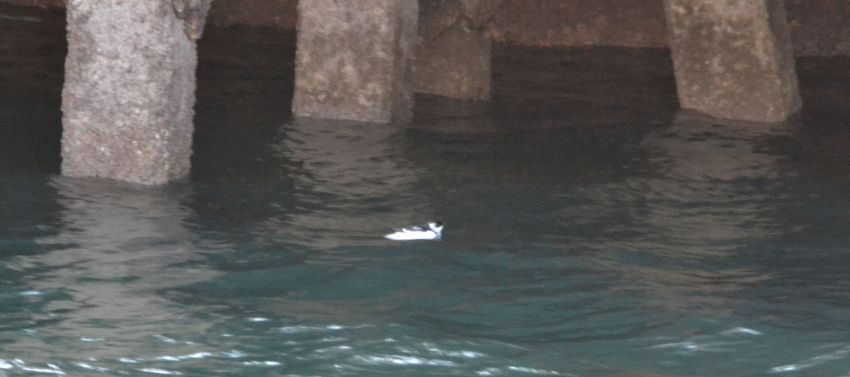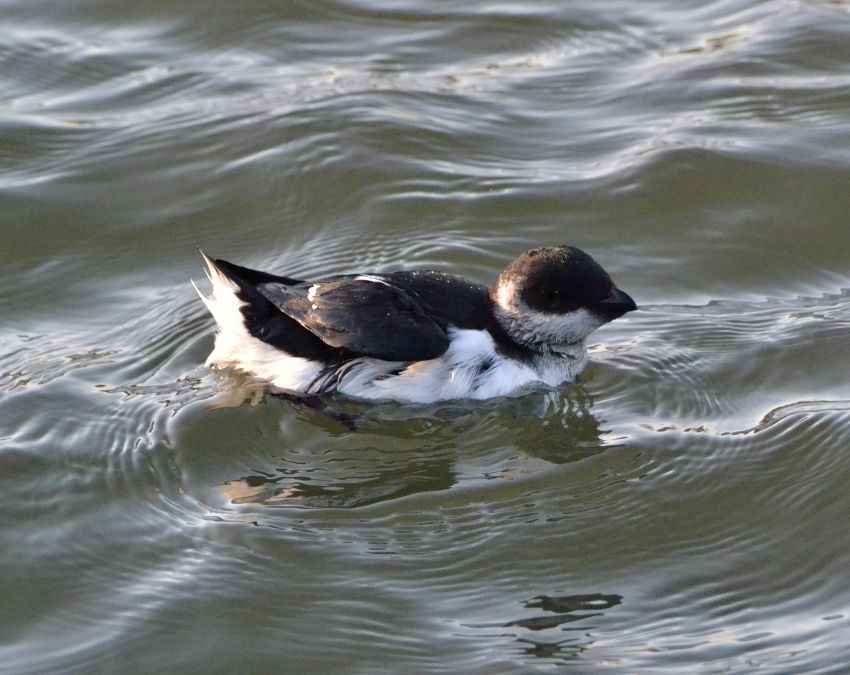Buses!! The sequence of events described here could hardly have been foreseen. Being a bird recorded mostly by sea watchers, the opportunity to observe the first of these Little Auks settled within an inland southern English harbour seemed too good to miss. But for three and a half hours that was as frustrating a twitch as I can ever recall undertaking. I couldn’t have imagined just how difficult the record would be to convert.
The smallest of the Auks are abundant on high Arctic breeding grounds and migrate south past British and north European coasts in late autumn. My only previous attempt nationally was at Abberton Reservoir in Essex two years ago. On that occasion, having failed to find it earlier in the day I chose to engage with the wrong set of birders on returning later in the afternoon. Enquiring of the other ones as they left, they had picked it out at great distance though a mere speck. Despite having self-found my own first sighting anywhere in Oslo earlier that November, the Essex occasion has rankled ever since as a badly managed one.
Hence on rising today I set off on a frequent route to a favoured county. The Little Auk in question had been present for seven days, and at a journey break en-route at Ringwood I checked RBA to confirm it was still there. Parking beside Weymouth Harbour (SY 676787) around 9:30am I was soon directed by other birders to where my quest had last been seen, and that was where the frustration began. Dozens of twitchers were milling around, but it was plain nobody had any real idea where the bird might be.
Amongst the hairy, blokey and variously grizzled crowd I soon ran into Ewan, who had travelled down with another friend and met up with several other hard-core twitching pals. Such was the interest this atypical location must have aroused, since I thought many of those present would be no strangers to the species itself. This (pictured above) was the issue: the inner “harbour” is a marina filled with rows of many moored yachts and other craft, and Little Auks typically make long dives under water for such a small bird. This one might also have been concerned to keep out of sight from predatory gulls.
As birders walked round and round the site and phoned their mates, word would go out from time to time of a sighting here or there. At one point we legged it at pace from one end of the harbour to the other, and the quite tiring outcome was always the same: no sign of the Auk on getting there. All this continued for three and a half hours that I can’t say were enjoyable. But I was there and so would have to stick with things for as long and whatever it took to avoid a second failure.
In the early afternoon Ewan’s group, having at least had sightings earlier, went to try for a reported Pallas’s Warbler a few miles to the north of Weymouth. I opted to stick with my required British list addition and in the event didn’t have to wait much longer. The latest birder to claim a sighting was holding forth at the same location below a slipway as some of the earlier ones; and I myself soon saw the Little Auk surface, swim briefly on, then dive again not to reappear. That was as much as anyone else had observed previously by my estimation, and a huge wave of relief swept through me that this was not to be a futile exercise and I had at least and at last ticked this thing for Blighty.
Thereafter it was more of the same for another 45 minutes or so. I was exhausted, my legs ached and by now a bitterly cold wind was singing a little eerily through the metalwork of all the moored boats. Some time before 2pm I decided to call it a day and headed back toward my parked car on the far side of the town bridge at the southern end of the marina. Never having been into Weymouth’s picturesque outer harbour area I decided to look around and there someone told me the Little Auk was now just a bit further downstream.
Indeed my quest was floating on the water’s surface (pictured above) amongst piling that supported a raised quay on the other side of the River Wey, and I watched it for some time. This was the location where Ewan and others had seen and taken pictures of the bird in the morning some 30 minutes ahead of my own arrival. The change of location had been put out on RBA and the remaining birders from the inner harbour soon joined me.
The RBA gallery of this bird perhaps suggests things might have been a lot simpler than they actually were (see here). With my eventual prolonged connection the day’s prior frustration and exhaustion became transformed into the sense of, this time around muted satisfaction the warm glow of a successful twitch produces. I had gained my 372nd British bird and 12th list addition of the year, and that outcome was all that mattered.
Nine days later on 30th it was a surprise to every local birder in Oxfordshire when at just before 2pm another Little Auk (pictured above) was reported on the River Thames at Pinkhill Lock (SP 440070) just to the north-west of Farmoor Reservoir. That was from an unknown observer in a neighbouring county’s Facebook group, and I was not alone in suspecting this might be a hoax. An appeal went out from our own admin for any willing Farmoor regular who might be in the vicinity to confirm the sighting. That took around 30 minutes, producing one of those “Get Out The Door” moments.
Arriving on site within an hour of news breaking I joined various of Oxon’s finest lined up along the Thames towpath watching and taking pictures of what seemed a ridiculously confiding individual. Any Little Auk found this far inland is most likely to be approaching if not already in a moribund state, and the consensus was this one too was not in fine fettle. The bird seemed disoriented in it’s behaviour, was not feeding and its wings appeared to be soiled. But it was a county list addition for every one of us.
The county recorder later advised there had been 19 previous records since 1950, of which 11 were dead or dying, and four more were taken into care. Only two known current Oxon birders had ever actually set eyes upon the remainder. Nobody realistically expected this latest one to survive the night but at first light in the morning it was re-found, so I went back for another look and to see how it might be.

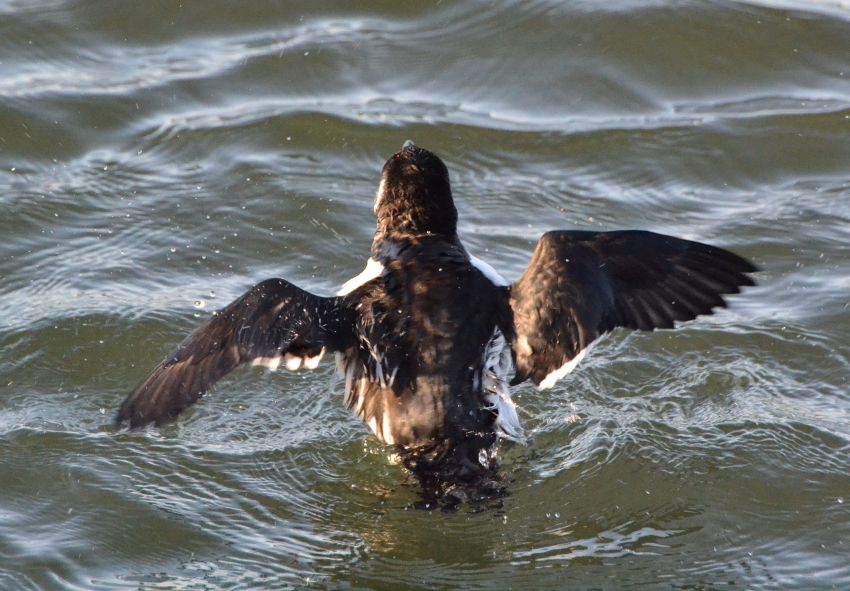
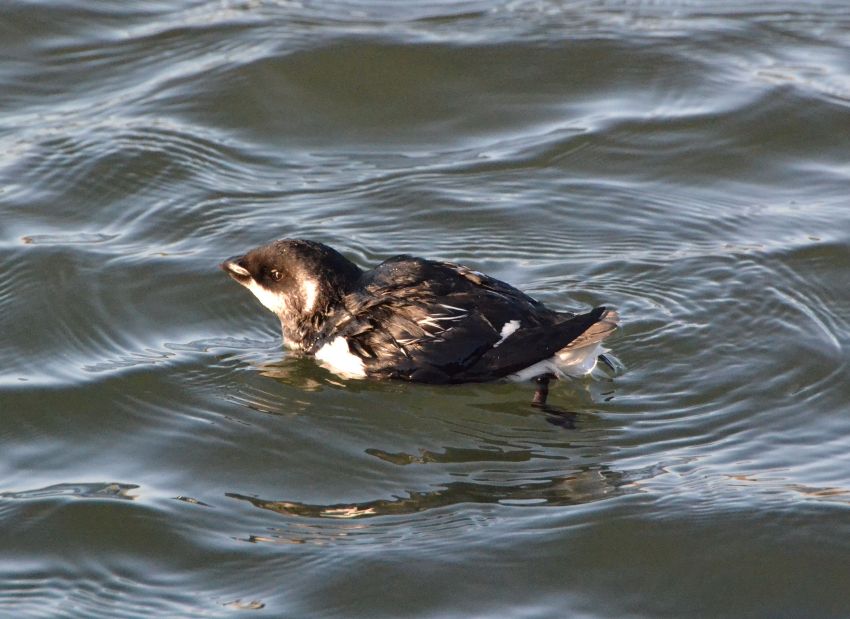
The scene was much the same as the previous afternoon but now things had clearly turned into a national twitch, though not on the scale of that in Weymouth. The bird to me looked a bit perkier as it swam along the river’s edge right up against rows of multi-framing cameras. But it was still not diving to feed and kept rising up in the water to flap it’s wings as if to shake off whatever was tainting them.
All my own pictures herein were taken at this point. Then two members of a seabird research group at Oxford University intervened to ask if anyone objected to them catching the bird to assess and return it to the coast. Nobody did of course since it was the lost waif’s best chance of survival. An angler’s net on a long pole had been procured for the purpose but the task was not going to be easy. The would be rescuer had plenty of advice and “assistance” that succeeded in driving the Auk further out into the river.
When it eventually drew alongside a pontoon on the far side he was able to cross the lock gate with his net, and catch the ailing Little Auk unhindered. Upon examining it (see here) this clearly expert researcher said it did not appear to be in too bad a condition before taking it away and into care. In the afternoon the bird was returned to the coast, being released at dusk near Bridgewater Bay NNR, Somerset. All those present over the two days will wish the so nearly wrecked but rather resilient guest in our midst a safe and full recovery. It will very likely be Oxfordshire’s most significant bird record of the year.

